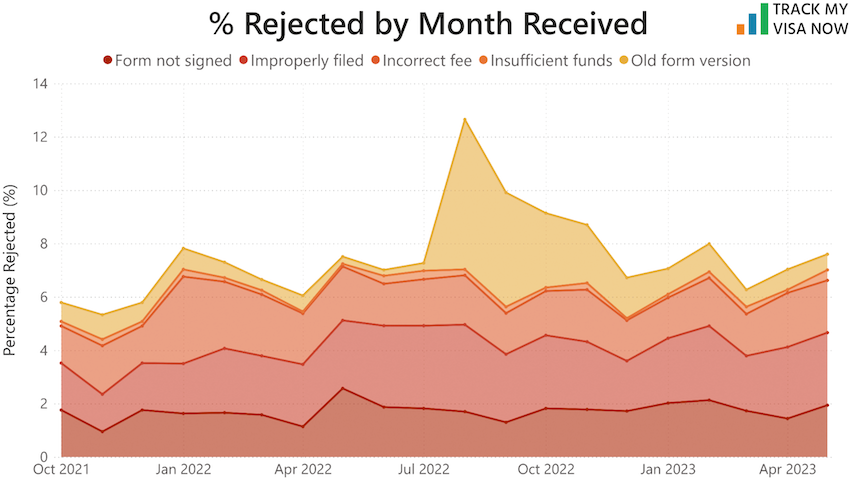Rejections: Exploring the Most Common (and Easy to Avoid) Mistakes

Introduction
Visa applications must be carefully prepared, but, sometimes, even the most careful filers make small mistakes that lead to a rejection. In this blog post, we will take a look at the common mistakes made by applicants. The good news is - most of them are easy to avoid. We recommend re-reading this article (and the accompanying checklist) before you send out any application.
Rejections vs. Denials: What is the Difference?
Before diving deeper, it's important to clarify the distinction between rejections and denials. For I-129F applications, rejections occur when a form is incorrectly filed. On the other hand, denials occur after USCIS has reviewed the application and that the case does not qualify for a visa. This blog post is focused on rejections.
Data Analysis: Most Common Mistakes for Rejections
Based on our recent data analysis from I-129F cases submitted to the California Service Center between February and May 2023, 7.1% of cases were rejected. We've also identified the most common mistakes leading to rejections. Here are the percentages of each mistake category:
- 35%: improperly filed form
- 26%: incorrect fee
- 25%: failure to sign the form
- 10%: use of an old form version
- 4%: insufficient funds
These statistics highlight the critical importance of meticulous attention to detail when preparing and submitting your visa application. Even a seemingly minor mistake can result in your application being rejected.
Observing the Spike: New Form Implementation
Starting in August 2022, we observed a significant spike in rejections. This period coincided with the release of a new form type by USCIS in March 2022. USCIS continued accepting the old version of the form for an additional five months, but, starting in August 2022, any application submitted with the outdated form was rejected. In fact, for cases received in that month, 44.4% of the rejections were caused by the old form version. You can see the spike in the graph below:

This data emphasizes the critical need for applicants (and immigration lawyers) to stay informed and ensure they are using the most up-to-date version at the time of filing.
Silver Lining: Early Rejections
The good news is that, if you do make one of the small mistakes above, your case will be rejected quickly. We found that 87% of cases that get rejected, are rejected within 7 days of being received. This should come as a huge relief to filers old and new. If you already filed and USCIS received your case months ago, it is unlikely that you made one of the above mistakes. If you are preparing to file and you do make one of these mistakes, USCIS will reject your application quickly and you will be able to immediately re-file without losing months of precious wait time.
Learning from Mistakes: Application Checklist
Consider using the following checklist before filing your visa application:
By reviewing these details you can significantly reduce the 7.1% chance of rejection.
Conclusion
Rejections in visa applications can be avoided by understanding and addressing the most common mistakes. Stay informed, double-check your application, and follow the provided tips. Don't forget to come back and check your estimated wait time. We update our forecasts daily!
— Nika, Track My Visa Now